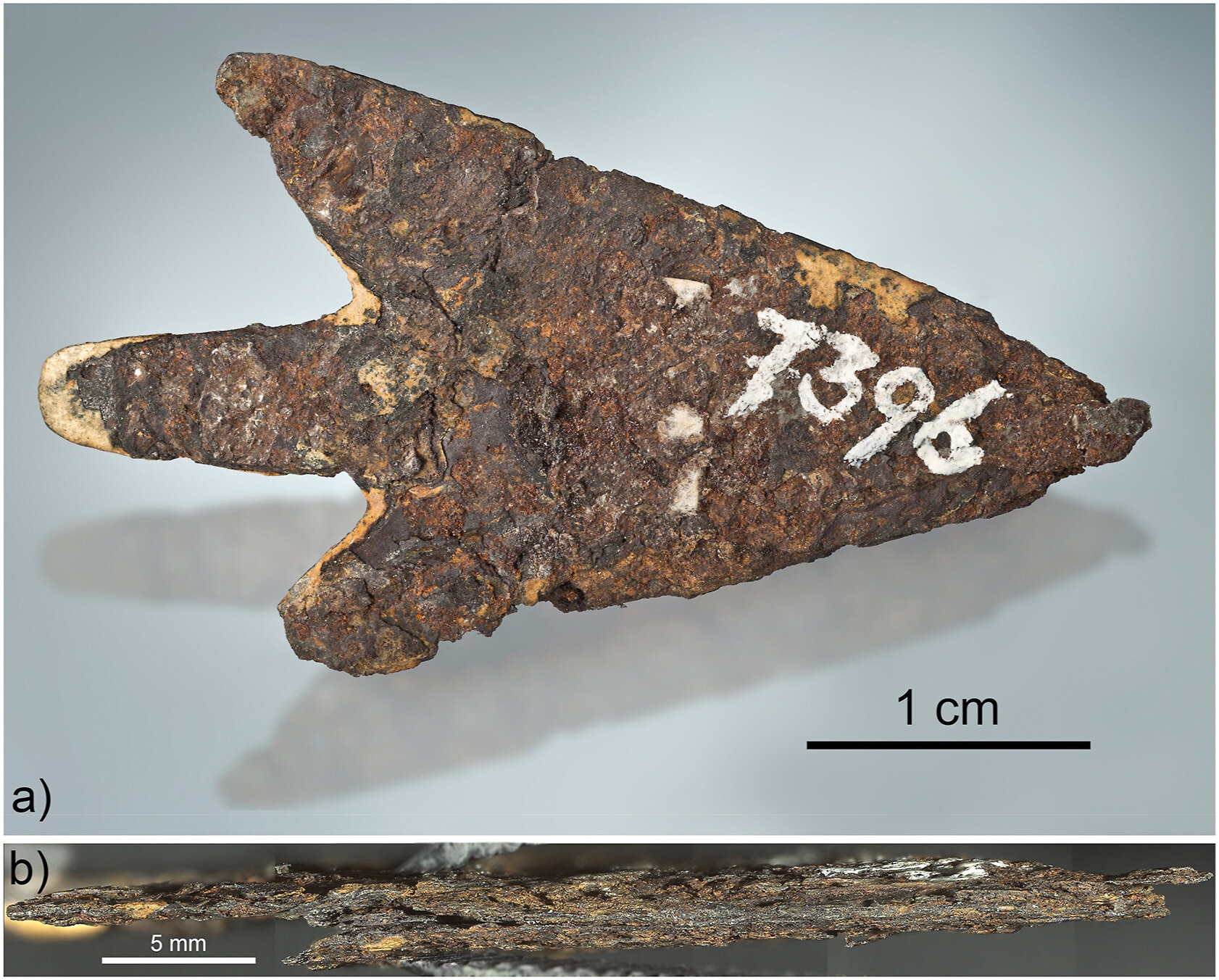An arrowhead discovered in the 19th century at the Bronze Age pile-dwelling site of Mörigen on Lake Biel, western Switzerland, has been found to be made of rare meteoritic iron.
The arrowhead dates to the late Bronze Age (900-800 B.C.) and is believed to have been one of a series of arrowheads unearthed at the site in 1873-4. The rest were all bronze. It has a triangular blade with a short tang. It weighs 2.9 grams and is an inch and a half long. It is now in the collection of the Bern History Museum.
Humans crafted objects out of iron long before they were able to smelt it from ore. It was foraged, basically, collected from broken fragments of meteorites fallen to the ground. The oldest known artifacts made of meteoritic iron are beads found in Gerzeh, Lower Egypt, from the predynastic period (5000-3400 B.C.). King Tutankhamun had a gold-handled dagger with a meteoric iron blade in the linen bandages that wrapped his body. No more than 54 Pre-Iron Age meteoritic iron artifacts are known on the archaeological record of Eurasia and northern Africa.
To expand that record, researchers have been looking through archaeological collections for unrecognized meteoritic iron artifacts. Because Mörigen is less than five miles from impact site of the Twannberg iron meteorite, objects recovered from the site now in several collections in Switzerland were examined using an array of technologies including scanning electron microscopy, portable X-ray fluorescence (pXRF) and two spectrometry methods that have never been used before in the analysis of archaeological objects of meteoritic origin.
Testing of an arrowhead found at the Bern History Museum showed it was made partly of aluminum-26 isotopes, which are not found naturally on Earth. They also found an iron and nickel alloy that has only ever been detected in meteorites. […]
The team also found remnants of an adhesive on the arrowhead, which they guessed to be tar pitch, suggesting that the arrowhead had been attached to a shaft of some sort.
Interestingly, the composition of the metal, specifically the concentrations of germanium and nickel did not match the Twannberg iron.
A search of a geological database showed that only three meteorites with the right combination of metals had been found in Europe: one in the Czech Republic, another in Spain, and the third in Estonia. The research team suggests that the one in Estonia was the most likely source for the arrowhead they studied—an example of the extensive trade network that was active during the Bronze Age in Central Europe.
The arrowhead study has been published in the Journal of Archaeological Science and can be read in its entirety here.
